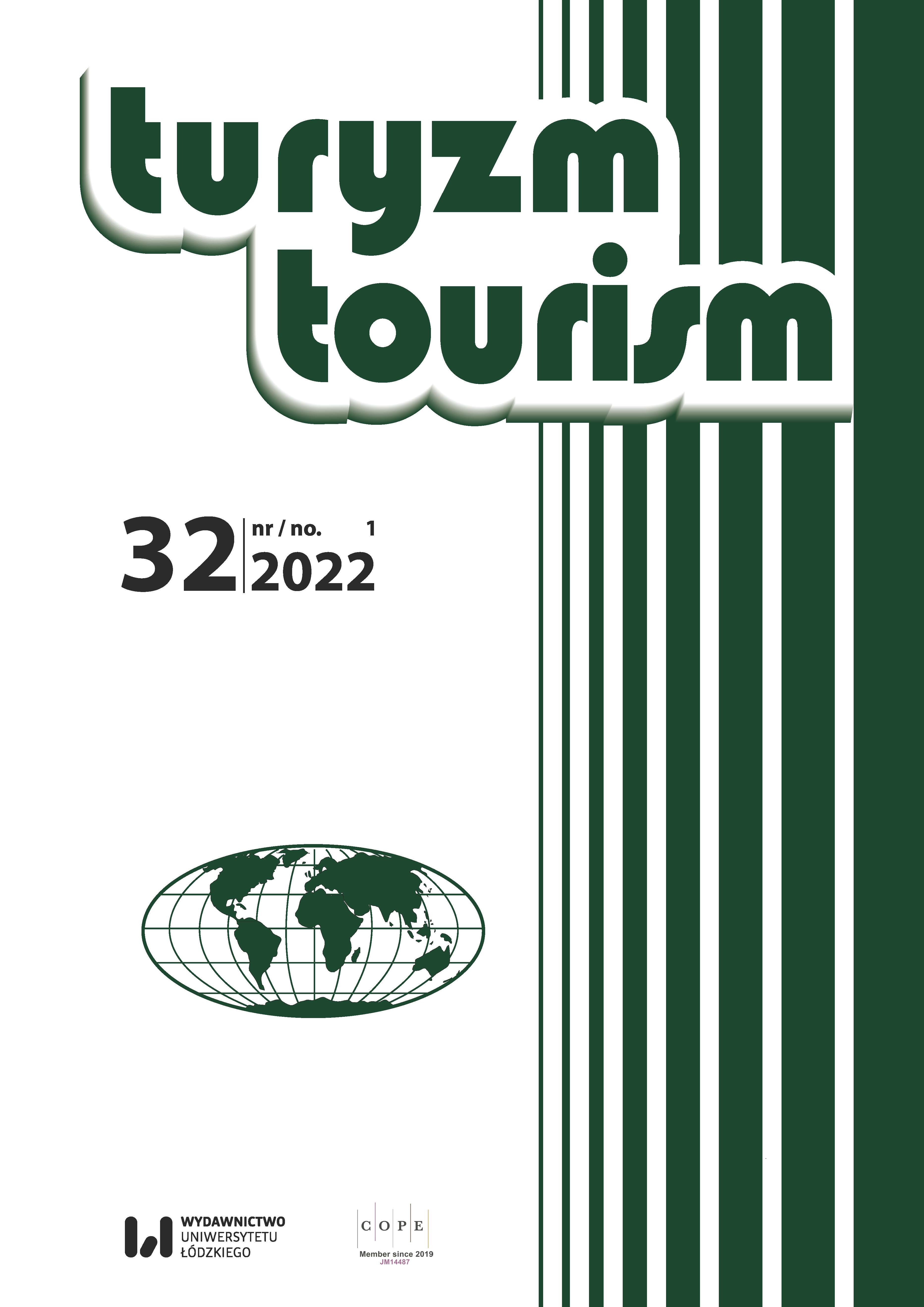Rozwój produktu turystycznego opartego na społeczności lokalnej na przykładzie targu na wodzie Klong-Lad-Ma-Yom w Bangkoku (Tajlandia)
DOI:
https://doi.org/10.18778/0867-5856.32.1.03Słowa kluczowe:
partycypacja, produkty oparte na lokalnej społeczności, turystyka rynków na wodzie, Klong-Lad-Ma-YomAbstrakt
Celem artykułu jest opracowanie koncepcji produktów dla turystyki opartej na lokalnych społecznościach, aby podkreślić wartości produktów, które bazują na autentycznej tożsamości pływającego targu Klong-Lad-Ma-Yom. Na podstawie wyników badań można stwierdzić, że w 2004 r. zaczęła się tam rozwijać sprzedaż lodów o smaku świeżego soku ananasowego. Powstało wówczas wiele historii i ludowych opowieści na temat tego produktu, co pomogło miejscowym wypromować go jako element turystyki opartej na lokalnej społeczności, przyczyniając się do jej znacznego rozwoju gospodarczego. Po wygaśnięciu kolejnych fal pandemii COVID-19 wielu turystów wciąż przyjeżdżało, by zakupić przeróżne owoce i desery do zjedzenia na miejscu. Ceny żywności podlegały negocjacji, a produktów kosztowano nieodpłatnie. Innymi słowy, rynek na wodzie Klong-Lad-Ma-Yom był miejscem, gdzie można było się targować, każde lokalne stoisko miało swój własny styl, a firmy współdziałały ze sobą. Wniosek: produkt oparty na lokalnej społeczności może efektywnie i w zrównoważony sposób podnosić wartość pływającego rynku Klong-Lad-Ma-Yom.
Pobrania
Bibliografia
Cohen, J.M., Uphoff, N.T. (1977). Rural development participation: Concept and measures for project design, implementation and evaluation. Ithaca, N.Y.: Cornell University Press.
Google Scholar
Dechakhumphu, K., Homdee, T. (2017). Participatory mechanism of community in public area management of Had Hae, the Mekong River central island. Area Based Development Research Journal, 9 (5), 347–360.
Google Scholar
Jaiborisudhi, W. (2013). A study on One Tambon One Product (OTOP) project and the product discourse. Retrieved from: https://so02.tci-thaijo.org/index.php/easttu/article/view/82708/65715 (2.12.2020).
Google Scholar
Kiertubolpaiboon, O., Pungnirund, B. (2020). Model for strengthening tourism river floating market of Tha Chin River in Thailand 4.0. Journal of MCU Peace Studies, 8 (4), 1352–1366.
Google Scholar
Lamprakhon, J., Cherdbunmuang, S., YenYam, P. (2017). Component of marketing factors and tourist behaviorvisiting Talingchan floating market. Rambhai Barni Research Journal, 11 (2), 58–65.
Google Scholar
Limpremwattana, V., Koolkaew, D. (2018). Component of marketing factors and tourist behavior to visit the Khlong Lad Mayom floating market. Journal of Cultural Approach, 19 (36), 41–50.
Google Scholar
McIntosh, R.W., Charles R.G. (1986). Tourism: Principles, practices, philosophies. New York: Wiley.
Google Scholar
Ministry of Tourism and Sports (2019). Number and income of foreign tourists monthly 2016–2019 (improve the number and income 2019). Retrieved from: https://www.mots.go.th/more_news_new.php?cid=585 (16.12.2019).
Google Scholar
Nunthawong, N. (2016). Factors affecting community participation at Khlong Lat Mayom floating market, Taling Chan, Bangkok. M.A. Hospitality and Tourism Industry Management, Graduate School, Bangkok University.
Google Scholar
Office of the National Economic and Social Development Board (2011a). The Developer King for the Happiness Benefit to the People. Bangkok: Kanpimpretrung Center. Retrieved from: https://www.nesdc.go.th/ewt_dl_link.php?nid=3139 (4.10.2021).
Google Scholar
Office of the National Economic and Social Development Board (2011b). The 11th National Economic and Social Development Plan (2012–2016). Bangkok: Office of the Prime Minister. Retrieved from: https://www.nesdc.go.th/download/article/article_20160323112431.pdf (4.10.2021).
Google Scholar
Phukamchanoad, P. (2016). Guidelines for social network development towards environmental conservation and ways of people’ lives at floating market for sustainable tourism in Taling-Chan District, Bangkok. Bangkok: Suan Sunandha Rajabhat University.
Google Scholar
Phukamchanoad, P. (2019). The model of human capital development for progressing from poverty to “the level of sufficiency: happy e-san” under the sufficiency economy philosophy: A case study of the Upper North Eastern Region 1 local residents. Bangkok: Suan Sunandha Rajabhat University.
Google Scholar
Richards, G. (2009). Tourism development trajectories – from culture to creativity? Paper presented to the Asia-Pacific Creativity Forum on Culture and Tourism, Jeju Island, Republic of Korea, 3–5 June.
Google Scholar
Sangaimsak, P., Sukserm, T. (2018). Customer’s purchasing requirements of creative products from Thai Wisdom. Journal of Rangsit Graduate Studies in Business and Social Sciences, 4 (2), 157–173. https://doi.org/10.14456/jrgbsrangsit.2018.28
Google Scholar
Satjatham, W., Chongsitthiphol, S., Na Thalang, C. (2017). Potential factors to promote sustainable tourism of Bang Nam Pheung Floating Market, Amphoe Phra Pradaeng, Samut Prakan. Dusit Thani College Journal, 11 (1), 275–289.
Google Scholar
Silpajaru, T. (2017). Research and statistical data analysis with SPSS and AMOS. 17th ed. Bangkok: Ordinary Partnership, R&D.
Google Scholar
Opublikowane
Jak cytować
Numer
Dział
Licencja

Utwór dostępny jest na licencji Creative Commons Uznanie autorstwa – Użycie niekomercyjne – Bez utworów zależnych 4.0 Międzynarodowe.










